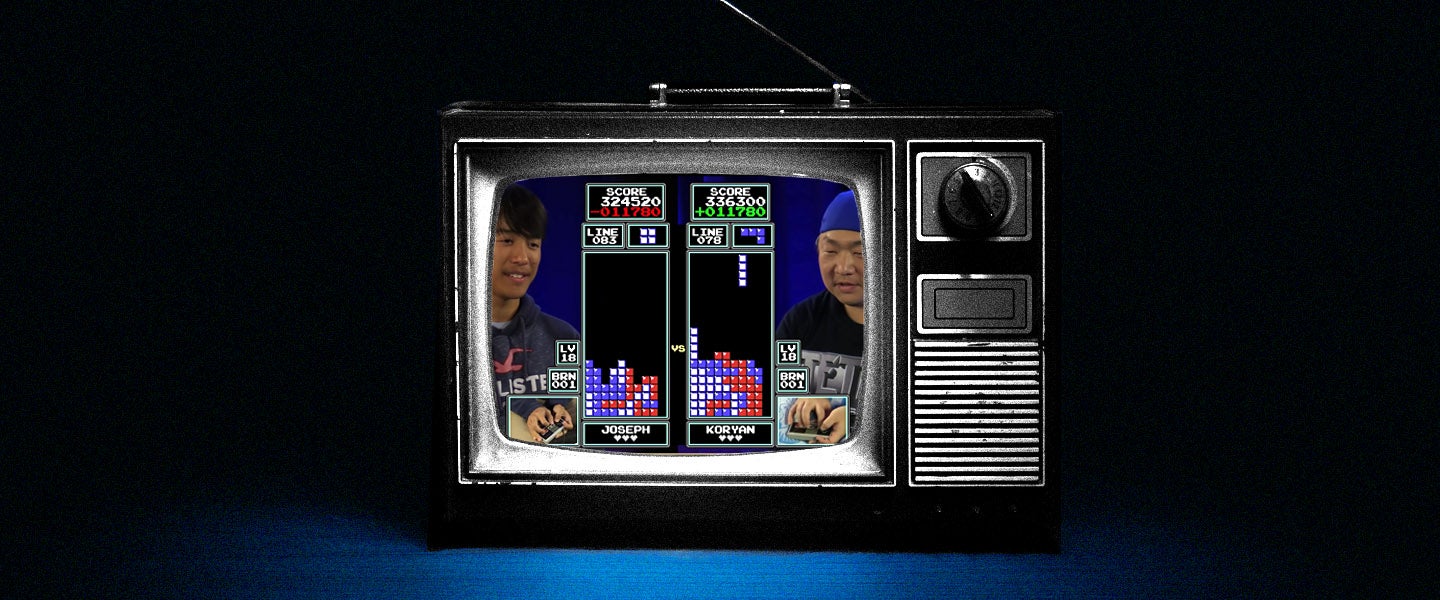In 1990, a 13-year-old named Thor Aackerlund walked into the Nintendo World Championships to compete in Tetris and left a god. He obliterated every previously held Tetris record.
Then, he disappeared.
Adding to his mystery, the Nintendo World Championship (NWC) was a one-time deal. So Aackerlund remained the last true Tetris champion for nearly two decades.
In fact, it wouldn’t be until 2009 when someone could finally lay claim to Aackerlund’s throne. “Harry Hong became the first person to score a ‘max-out’ — or 999,999 points, the highest score possible — on NES Tetris,” filmmaker Adam Cornelius tells me. “It was then that I realized there wasn’t an official competition that could crown an official champion.”
In tandem with pursuing a documentary to find the one true Tetris master, Cornelius enlisted the help of third-place NWC champion Rob Mihara and another filmmaker, Vince Clemente, to produce a new tournament. “The main idea to start the tournament was to use it for the climax of the film,” Clemente explains. “I never thought I’d be doing it for a second year, let alone 10 years later.”
“Between the three of us, we ended up creating what’s now the Classic Tetris World Championship,” Cornelius says. “Back [in 2009], it was a modest affair with a basic analog video switcher someone gave us, and just four ugly Tetris games on a movie screen at a theater called the Downtown Independent in Los Angeles.”
Still, even at that first event, there was a palpable buzz. The Tetris Company, known for being very protective of its intellectual property, was “very much on board with the [Classic Tetris World Championships],” says David MacDonald, a YouTuber who’s extensively detailed the CTWC. “So much so that Henk Rogers, founder of the Tetris Company, spoke at that first event.”
“There was this crazy energy, and it really worked as a spectator event at a time when Twitch wasn’t around yet,” Cornelius recalls. “Plus, esports weren’t as big, so in the moment, it was a strange and exciting thing to be a part of.”
“It’s incredibly satisfying to watch someone stack blocks perfectly, or get themselves out of messy situations,” MacDonald says of the tournament’s intrinsic allure.
“People even say it’s exhausting to watch our live tournament, because you’re empathizing so much with the players’ struggles,” Cornelius adds.
my new self-care is watching competitive Tetris, why aren't more people talking about this pic.twitter.com/bF24psQq4M
— Adam H. Johnson (@adamjohnsonNYC) November 3, 2019
The Classic Tetris World Championships have clearly come a long way from that tiny movie theater in L.A. — but not without a little help from a change in the omnipotent YouTube algorithm. Basically, per MacDonald, when YouTube’s algorithm started rewarding videos that generate a lot of watch time in 2016, the CTWC’s 30- to 50-minute Tetris matches were heavily favored. Suddenly, videos that were originally uploaded purely for archival purposes were at the top of YouTube’s “recommended videos.”
“When we made the movie, it was a pretty small, tight-knit group,” Conrelius says. “But in the last few years, [the community] has been growing rapidly. We’ve hit a point that I can’t keep track of everyone.”
But there’s one more ingredient necessary for viral success — shareability. Enter Jeff Moore, an underdog who’d, MacDonald says, “never made it past [CTWC’s] initial rounds, but who battled his way to the finals to face Jonas [Neubauer], who had won the championship several times before.” As Moore advanced, Tetris’ longtime, uber-enthusiastic play-by-play announcer grew more and more excited, which was tailor-made for bite-size memes, which spread the competitive Tetris gospel even further.
All the while, it helped draw in a younger set of players, who are taking the game to whole new levels. “There’s a recent rise in skill level due to the collaborative online hive mind of NES Tetris players figuring out the best strategies,” MacDonald tells me. “Similar to how traditional sports teams use game film to study the best strategies, a new NES Tetris player now has endless hours of footage they can watch to see all the best strategies in action.”
And there is a lot of skill that goes into this seemingly simple game. “Playing the game at a high level is like a juggling act,” MacDonald says, directing me to an entire book about mastering Tetris. “Every move is a calculated decision of risk management. If you’re playing a competitive game against someone else, you also have to factor in how risky you need to be to beat the other player’s score before you reach Level 29, where the game becomes nearly impossible.”
The newfound popularity has helped change the modern gaming community’s perception of Tetris as well. “It’s tended to view competitive Tetris as somewhat of a joke, like competing in jacks or hopscotch,” Cornelius tells me. “In fact, in some gamer scenes, a common insult directed at someone who is playing poorly would be to ‘go play Tetris.’ But as more and more people are actually watching the videos, we’ve started to get more respect from the greater esports community.”
Not to mention, he adds, “Tetris is bigger than video games. It’s more like cards, or even golf — just this super-simple objective of getting a ball in a hole. So even after thousands of years, it will never get old.”

